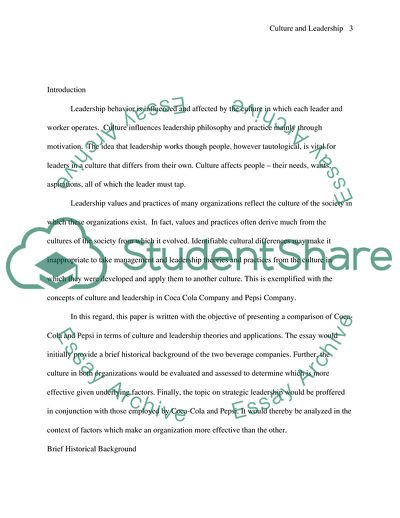Cite this document
(Culture and Leadership: A Comparison of Coca-Cola and Pepsi Case Study Example | Topics and Well Written Essays - 1500 words, n.d.)
Culture and Leadership: A Comparison of Coca-Cola and Pepsi Case Study Example | Topics and Well Written Essays - 1500 words. https://studentshare.org/culture/1730379-comparison-of-coca-cola-and-pepsi-in-culture-and-leadership
Culture and Leadership: A Comparison of Coca-Cola and Pepsi Case Study Example | Topics and Well Written Essays - 1500 words. https://studentshare.org/culture/1730379-comparison-of-coca-cola-and-pepsi-in-culture-and-leadership
(Culture and Leadership: A Comparison of Coca-Cola and Pepsi Case Study Example | Topics and Well Written Essays - 1500 Words)
Culture and Leadership: A Comparison of Coca-Cola and Pepsi Case Study Example | Topics and Well Written Essays - 1500 Words. https://studentshare.org/culture/1730379-comparison-of-coca-cola-and-pepsi-in-culture-and-leadership.
Culture and Leadership: A Comparison of Coca-Cola and Pepsi Case Study Example | Topics and Well Written Essays - 1500 Words. https://studentshare.org/culture/1730379-comparison-of-coca-cola-and-pepsi-in-culture-and-leadership.
“Culture and Leadership: A Comparison of Coca-Cola and Pepsi Case Study Example | Topics and Well Written Essays - 1500 Words”. https://studentshare.org/culture/1730379-comparison-of-coca-cola-and-pepsi-in-culture-and-leadership.


